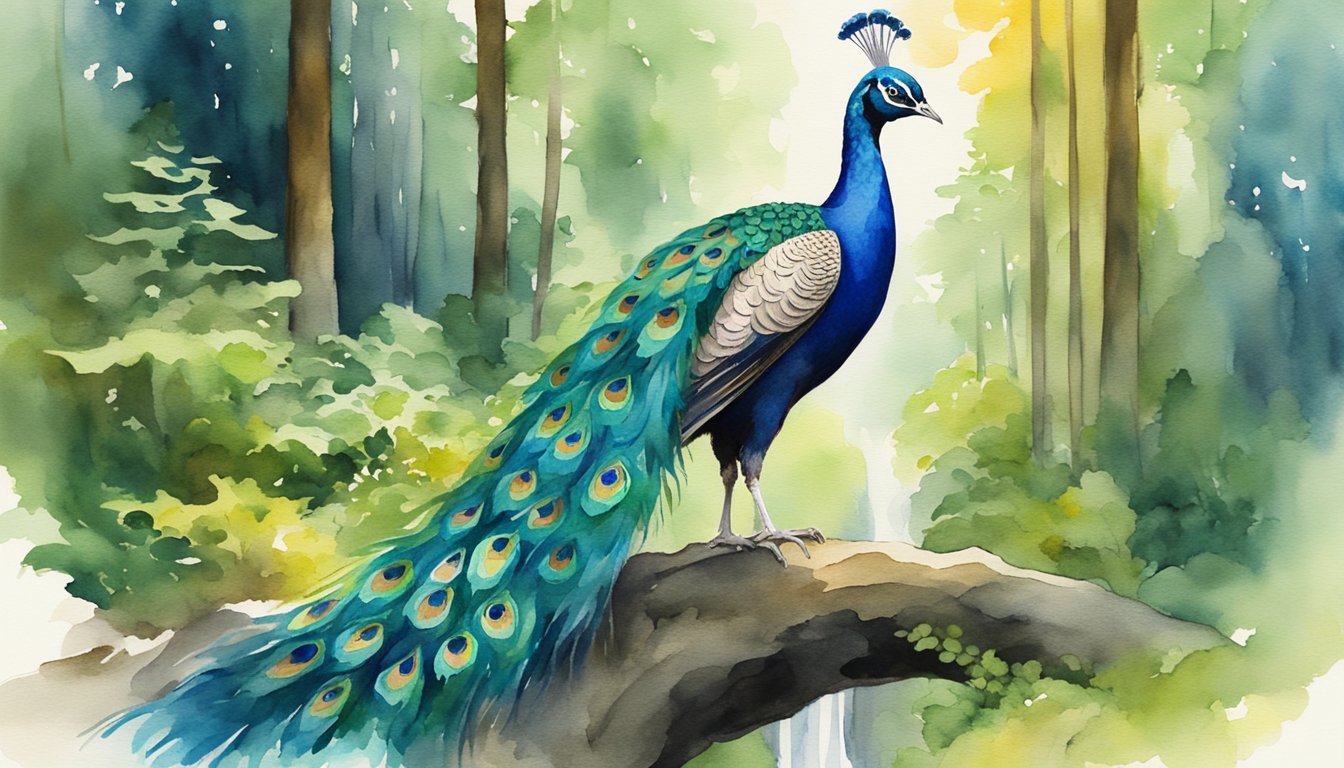Peafowl Origins and Native Habitats

Peafowl, the family of birds to which the peacock belongs, have an intricate history tied to various geographic regions. They display a rich variety of species native to Asia and one distinct species to Africa.
Native Peafowl Species and Distribution
The Indian peafowl (Pavo cristatus), also known as the blue peacock, hails from the Indian subcontinent and has been introduced to many other parts of the world. Celebrated as the national bird of India, it is native to the Indian subcontinent which includes Pakistan, India, Bangladesh, and Sri Lanka. Meanwhile, the green peafowl (Pavo muticus), with its vivid, emerald-colored plumage, is indigenous to Southeast Asia, spreading from Myanmar to Java. The green peafowl is further classified into subspecies, including the Javanese peacock. Another species worth mentioning is the Congo peacock (Afropavo congensis), a lesser-known, yet equally magnificent bird found solely within the rainforests of the Democratic Republic of the Congo.
Habitat Preferences and Adaptations
Peafowl are versatile birds that require forest habitats to thrive. They favor regions where forests are dense but also exhibit remarkable adaptability to different ecological niches. The Indian peafowl often occupies deciduous forests and open forest areas, while the green peafowl’s habitat extends from dry forests to the rainforests of Southeast Asia. Favoring altitudes of no more than 2000 meters above sea level, both species of peafowl have been observed to adapt to human presence and can often be found in proximity to farmlands and rural villages. They are omnivores, feeding on a diverse diet from fruits, insects to small reptiles. High in the trees rest their lofty roosts, safe from nighttime predators.
Peafowl in North America and Conservation Status

The peafowl, including the majestic peacocks, are not native to North America but have become a part of the landscape due to escape from captivity and deliberate releases. These vibrant birds, known for their dazzling plumage and striking courtship displays, have successfully adapted to various environments across the continent. Their presence in parks and estates adds an exotic charm, often becoming a subject of fascination and local folklore. Interestingly, historical inquiries such as was Queen Charlotte Black continue to spark discussions about identity and heritage, much like how peafowl have blended into new habitats while retaining their distinct origins.
Introduction and Distribution in North America
Peafowl, best known for their extravagant plumage, are native to South Asia but have been introduced to various parts of North America. In areas like California and Florida, peafowl are either kept as pets or exist as feral populations, often originating from escapees of private collections or zoos. These birds have adapted to a variety of habitats across the United States, sometimes even thriving in suburban settings.
Challenges and Conservation Initiatives
The status of peafowl in North America is complex, as they are not considered a native species. This status affects the conservation measures applied to them. There are reports that some feral colonies could cause ecological disturbances, such as habitat loss for native species. However, conservation efforts are underway to manage and protect these exotic birds, particularly aimed at preventing the negative impacts of feral peafowl populations. In terms of global conservation status, the Indian peafowl, for instance, is listed as a species of least concern, though certain subspecies of peafowl may have a more vulnerable status due to habitat encroachment and illegal hunting in their native range.
Cultural Significance and Human Interaction
Peafowl hold a significant place in many cultures and are often maintained in zoos across North America for educational and ornamental purposes. Their alluring beauty and unique behaviour, including elaborate breeding displays, enrich visitor experiences. However, in some urban and suburban communities, peafowl can be seen roaming freely, leading to diverse human-peafowl interactions, ranging from being cherished as local attractions to being considered nuisances due to their loud calls and sometimes aggressive behavior.

